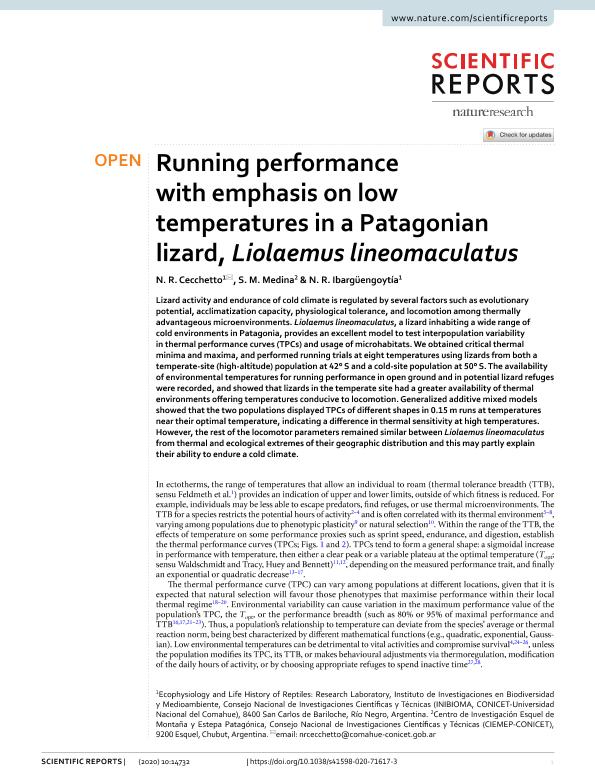Artículo
Running performance with emphasis on low temperatures in a Patagonian lizard, Liolaemus lineomaculatus
Fecha de publicación:
12/2020
Editorial:
Nature Research
Revista:
Scientific Reports
e-ISSN:
2045-2322
Idioma:
Inglés
Tipo de recurso:
Artículo publicado
Clasificación temática:
Resumen
Lizard activity and endurance of cold climate is regulated by several factors such as evolutionary potential, acclimatization capacity, physiological tolerance, and locomotion among thermally advantageous microenvironments. Liolaemus lineomaculatus, a lizard inhabiting a wide range of cold environments in Patagonia, provides an excellent model to test interpopulation variability in thermal performance curves (TPCs) and usage of microhabitats. We obtained critical thermal minima and maxima, and performed running trials at eight temperatures using lizards from both a temperate-site (high-altitude) population at 42° S and a cold-site population at 50° S. The availability of environmental temperatures for running performance in open ground and in potential lizard refuges were recorded, and showed that lizards in the temperate site had a greater availability of thermal environments offering temperatures conducive to locomotion. Generalized additive mixed models showed that the two populations displayed TPCs of different shapes in 0.15 m runs at temperatures near their optimal temperature, indicating a difference in thermal sensitivity at high temperatures. However, the rest of the locomotor parameters remained similar between Liolaemus lineomaculatus from thermal and ecological extremes of their geographic distribution and this may partly explain their ability to endure a cold climate.
Palabras clave:
SUPERCOOLING
,
ECOLOGICAL EXTREMES TEMPERATURES
Archivos asociados
Licencia
Identificadores
Colecciones
Articulos(INIBIOMA)
Articulos de INST. DE INVEST.EN BIODIVERSIDAD Y MEDIOAMBIENTE
Articulos de INST. DE INVEST.EN BIODIVERSIDAD Y MEDIOAMBIENTE
Citación
Cecchetto, Nicolas Rodolfo; Medina, Susana Marlin; Ibarguengoytía, Nora; Running performance with emphasis on low temperatures in a Patagonian lizard, Liolaemus lineomaculatus; Nature Research; Scientific Reports; 10; 1; 12-2020; 1-13
Compartir
Altmétricas




